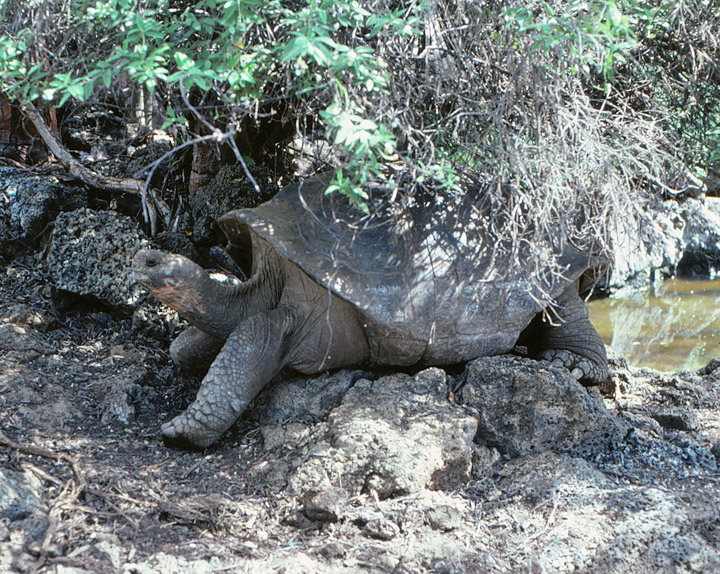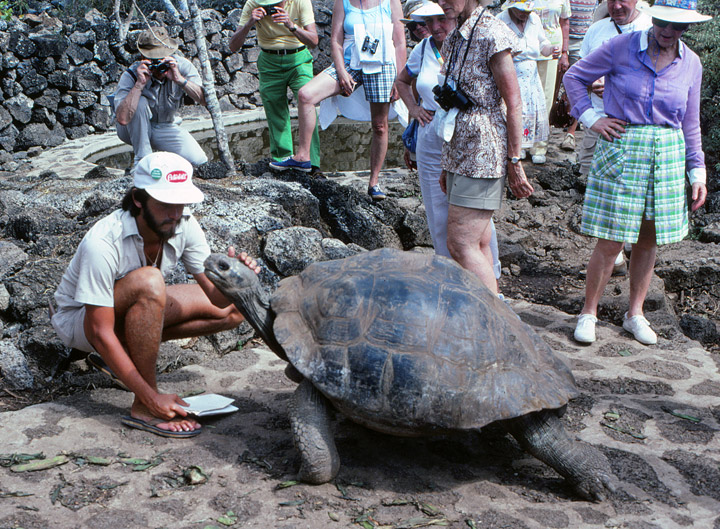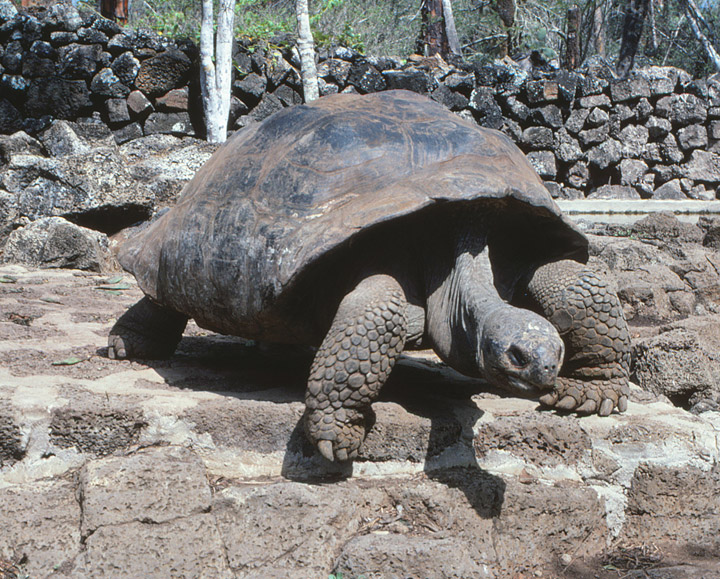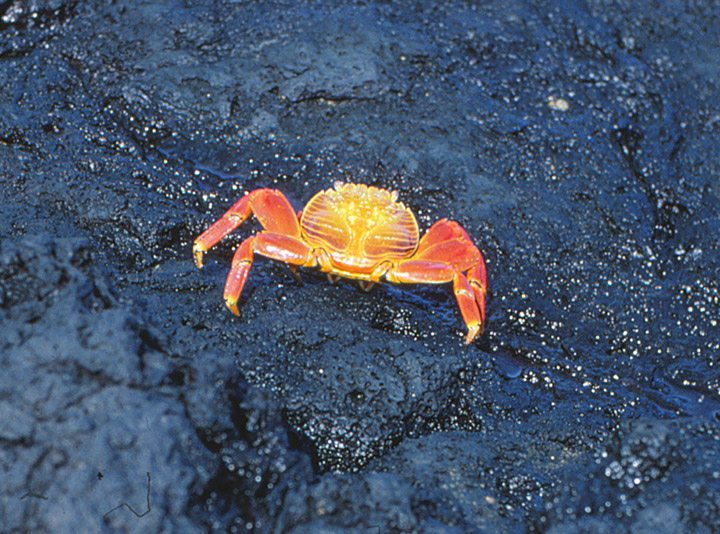

Tortoise

Galápagos tortoise
The Galápagos tortoise (or Galápagos giant tortoise), is the largest living tortoise, endemic to nine islands of the Galápagos archipelago. Adults of large species can weigh over 300 kilograms (660lb) and measure 1.2 meters (4 ft) long. Although the maximum life expectancy of a wild tortoise is unknown, the average life expectancy is estimated to be 200 years.

The Galápagos tortoises have very large shells (carapace) made of bone which is
an integral part of the skeleton. The bony plates of the shell are fused with
the ribs and other bones to form a rigid protective structure. When a tortoise
feels threatened it can withdraw its head, neck and forelimbs into its shell for
protection, presenting a thick shield to a would-be predator. The legs have hard
scales that provide an effective armour when withdrawn.

The scutes of the carapace are not coincident with the underlying bony plates
and grow at their outer edges. Tortoises thus keep their characteristic scute
pattern throughout life. These do have annual growth bands but are not useful
for telling the age as the outer layers are rubbed off in the normal wear and
tear of living.
The shape of the carapace and other physical features correspond to the habitat
of each of the 13 species. Larger islands with more wet highlands such as Santa
Cruz and Isabela (where the Alcedo Volcano is found) with lush vegetation near
the ground have tortoises with 'dome-back' shells; these animals have restricted
upward head movement due to shorter necks, and tend to have shorter limbs as
well. These are the heaviest and largest of the subspecies.
Smaller, drier islands such as Española and Pinta are inhabited by tortoises
with 'saddle-back' shells comprising a carapace elevated above the neck and
flared or reverted above the hind feet, and longer, thinner limbs. This appears
to allow them to browse taller vegetation. On the drier islands with tortoise
populations, the Galápagos Opuntia cactus (a major source of their water) has
evolved a more tree-like and taller form, giving evidence of an evolutionary
arms race between progressively taller tortoises and correspondingly taller
cacti. Saddleback tortoises tend to be smaller (females average 27 kg / 60 lb,
males 54 kg / 119 lb) in size than their domeback counterparts.

Sally Lightfoot crab
In all species, male has a concave undershell, which facilitates mating. The male is also always larger than the female. Shells are not either saddleback or domeback; they can also be of intermediate type with some characteristics of both the extreme types. The Sierra Negra volcano population that inhabits southern Isabela Island is notable for the flat, so-called "tabletop" shells, differing from both the domebacks and saddlebacks. There is little variation in the dull-brown colour of the shell or scales between populations.
Text from Wikipedia

Sally Lightfoot crab
Return to Galapagos Island page